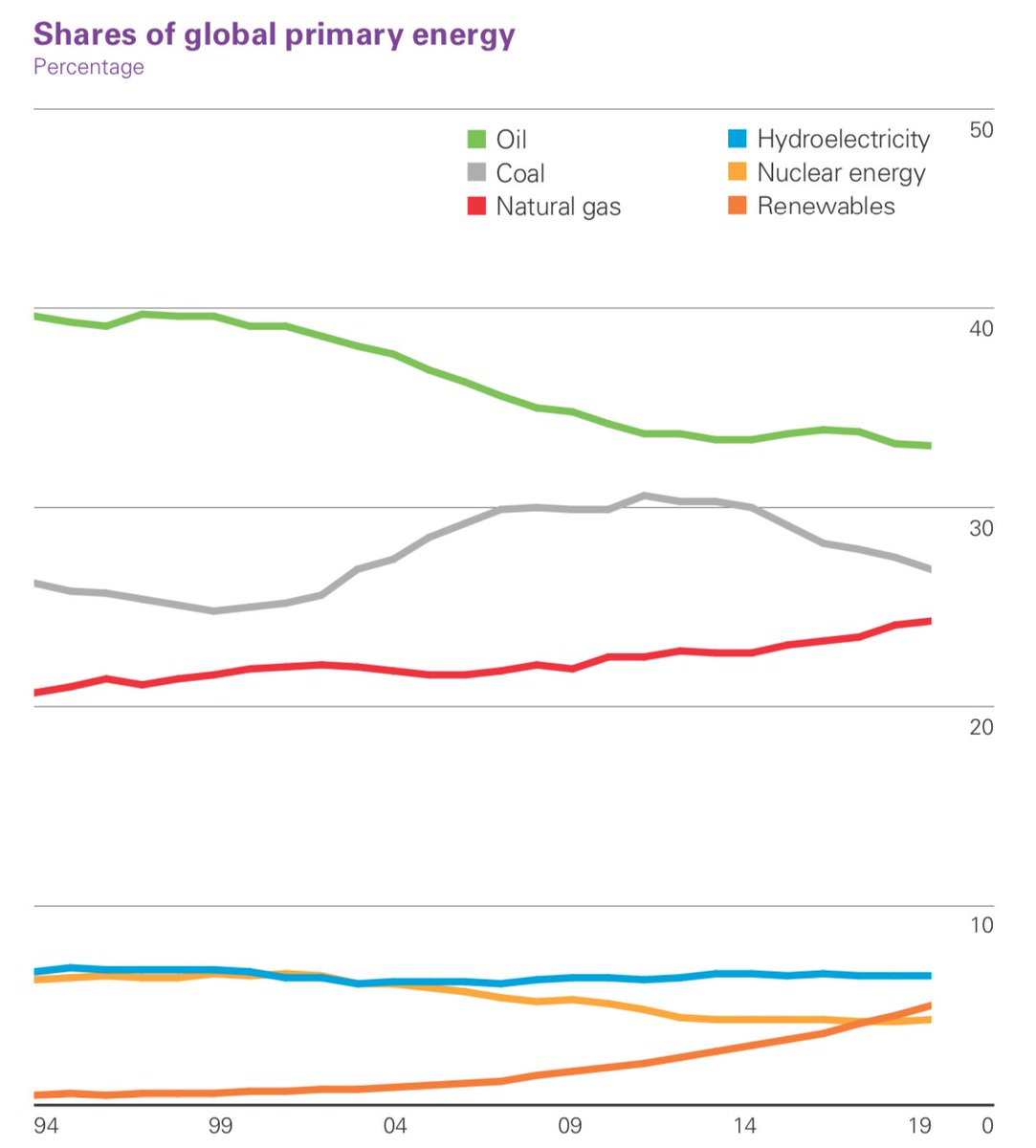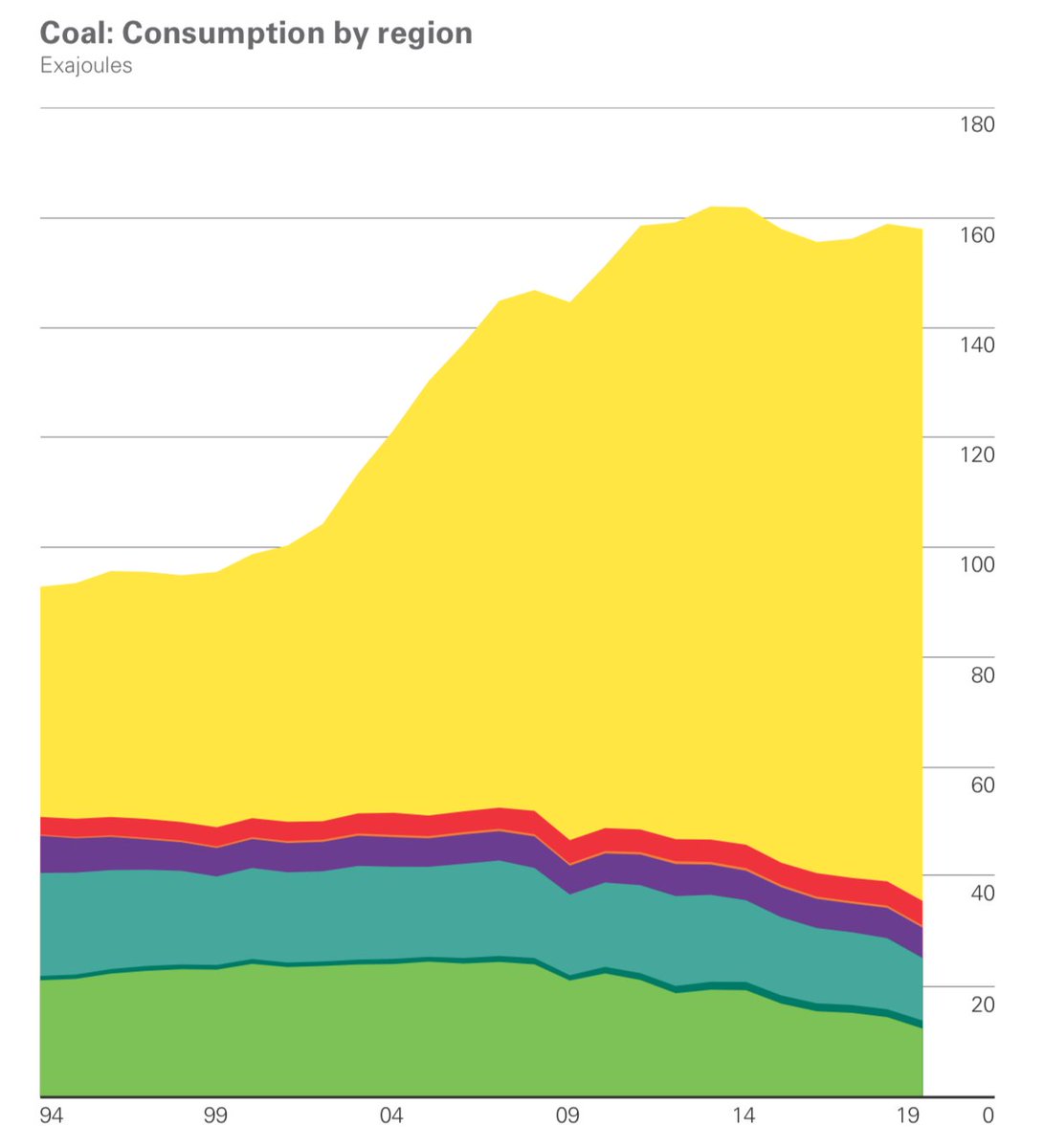A short thread on how the EV market might develop across the globe after studying Norway in some detail. First, and thanks to @liamdenning, here is Rystad Energy's latest 2019 review of the EV market in Norway rystadenergy.com/newsevents/new…
2- this is how the market for ICE vehicles (internal combustion) ends: gradually then suddenly. For more on this please see the Jan 2018 post on dollarsperbbl.com which analysed / predicted Norway as a laboratory for the global market dollarsperbbl.com/2018/01/24/osl…
3-so with that as background: Yes Norway promoted EVs via policies / subsidies, but yes, as noted, this only accelerated a trend; once consumers could buy equivalent vehicles for a 1/6 of the running cost. why not? Plus as EV choice grew, especially Tesla 3, the trend accelerated
4 - ICE Incumbents, assume Norway as an outlier at your peril: numbers
Norway EV mkt share car sales
2013 – 6%
2019 – 51%
EVs % of fleet:
2013 – 1%
2019e – 14%
Diesel Car mkt share
2013 – 60%
2019 – 32%
Main diesel car Volvo V40, V70, XC60
2013 – Market share 6%
2019 – 0.5%
Norway EV mkt share car sales
2013 – 6%
2019 – 51%
EVs % of fleet:
2013 – 1%
2019e – 14%
Diesel Car mkt share
2013 – 60%
2019 – 32%
Main diesel car Volvo V40, V70, XC60
2013 – Market share 6%
2019 – 0.5%
5 - This is how disruption occurs in the energy transition. As we have said, based on S curve mathematics, the change will be non-linear – gradual, then sudden. One can only imagine the tumult in Volvo a few years back that likely caused their pivot to embrace EVs.
6 - Rystad note that with all this EV growth there is “only a modest yet continuous decrease in diesel and gasoline consumption of 2% every quarter since the beginning of 2018– so no correlation with fuel demand”. Of course there is, and actually this decline is very significant
7-Fuel decline is not higher because the fleet of ca 2+million vehicles starts out mostly ICE vehicles being exchanged in the second hand market. So in fact it is perfectly correlated with a S curve model: whilst new sales are above 50%, EVs as part of the fleet are below 15%.
8 - But goodness me – this decline rate is not “modest” – this is the most fearsome beast maths can throw at you as a business: exponential decay – your whole system declining at a constant rate, year after year, whilst competition grows (unless you switch to electric).
9-even discussing a decline of any x% a year is admitting a huge fact: a peak has been reached – decline is now the norm. For any business this is anathema – but here we stroll whistling into the transition as if permanent decline is, you know, not that big a deal (!!).
10-Let’s assume the decay is 4% per year rather than 2% a quarter – take out a calculator and multiply 0.96 by itself 5 times. That is roughly 0.8 – so at this “modest rate” consumption of gasoline and diesel will fall by 20% by 2024,
11-and as EV sales are still growing at ca 15% pa, by 2024 they will have > 90% market share, and be a third of the fleet, at current rates. Try selling a diesel car you bought this afternoon even in 2 years time in downtown Oslo.
12- The full EV transition in Norway is so close that the numbers are becoming very clear – this is what made the modest but real-world market of Norway always so interesting – it is the world’s giant EV petri dish.
13- Here then what I think Norway is telling us as to how this transition goes with passenger vehicles in major markets: first
1 - EVs - reach 5% market share
2 - Hybrids collapse - redundant technology
3 - Diesels collapse - redundant technology plus policy
Then..
1 - EVs - reach 5% market share
2 - Hybrids collapse - redundant technology
3 - Diesels collapse - redundant technology plus policy
Then..
14-
4 - Gasoline holds/increases market share until EVs reach 15-20% market share, then quickly yield
5 - Fuel consumption peaks @5% EV market share, plateaus for a short time before exponential; decline, and finally
4 - Gasoline holds/increases market share until EVs reach 15-20% market share, then quickly yield
5 - Fuel consumption peaks @5% EV market share, plateaus for a short time before exponential; decline, and finally
15 - step 6 - 10 years from the 5% EV market share capture, EVs are ca 90% of sales and 33% of the fleet, new diesels and hybrids do not exist, gasoline niche. Predict that point 2023 Norway, 2027 California (&UK?), 2028 China
16 - and last one: by 2030 EVs are simply Vs. Well its a prediction - let's see what happens over the next few quarters - EV sales still up 40% this year despite car sale declines overall. Cheers.
• • •
Missing some Tweet in this thread? You can try to
force a refresh








